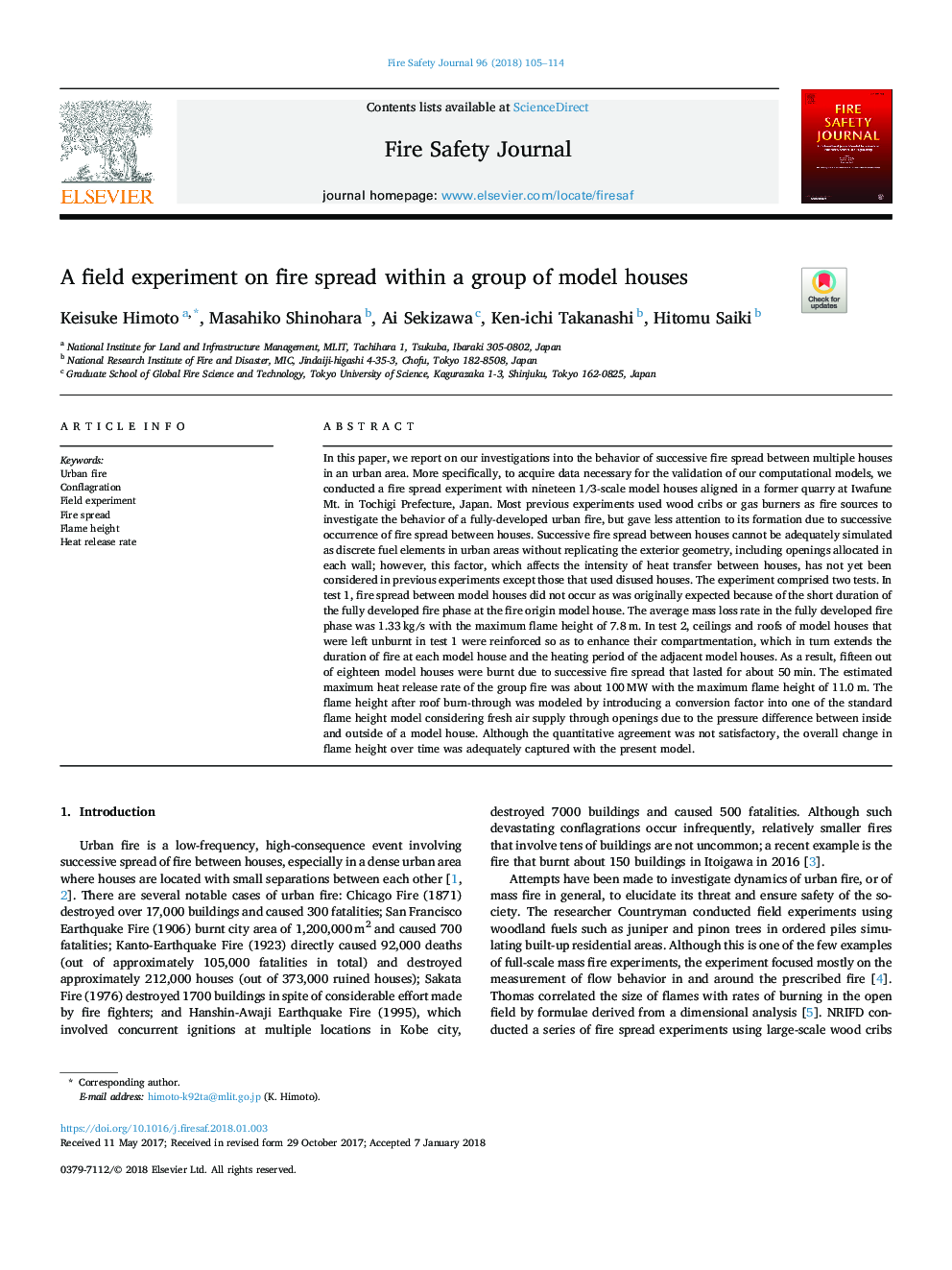| کد مقاله | کد نشریه | سال انتشار | مقاله انگلیسی | نسخه تمام متن |
|---|---|---|---|---|
| 6741790 | 1429207 | 2018 | 10 صفحه PDF | دانلود رایگان |
عنوان انگلیسی مقاله ISI
A field experiment on fire spread within a group of model houses
ترجمه فارسی عنوان
یک آزمایش میدانی در مورد گسترش آتش در یک گروه از خانه های مدل
دانلود مقاله + سفارش ترجمه
دانلود مقاله ISI انگلیسی
رایگان برای ایرانیان
کلمات کلیدی
آتش نشانی شهری، ریزش مو، آزمایش میدانی، گسترش آتش، ارتفاع شعله، نرخ آزاد شدن حرارت،
موضوعات مرتبط
مهندسی و علوم پایه
سایر رشته های مهندسی
مهندسی عمران و سازه
چکیده انگلیسی
In this paper, we report on our investigations into the behavior of successive fire spread between multiple houses in an urban area. More specifically, to acquire data necessary for the validation of our computational models, we conducted a fire spread experiment with nineteen 1/3-scale model houses aligned in a former quarry at Iwafune Mt. in Tochigi Prefecture, Japan. Most previous experiments used wood cribs or gas burners as fire sources to investigate the behavior of a fully-developed urban fire, but gave less attention to its formation due to successive occurrence of fire spread between houses. Successive fire spread between houses cannot be adequately simulated as discrete fuel elements in urban areas without replicating the exterior geometry, including openings allocated in each wall; however, this factor, which affects the intensity of heat transfer between houses, has not yet been considered in previous experiments except those that used disused houses. The experiment comprised two tests. In test 1, fire spread between model houses did not occur as was originally expected because of the short duration of the fully developed fire phase at the fire origin model house. The average mass loss rate in the fully developed fire phase was 1.33â¯kg/s with the maximum flame height of 7.8â¯m. In test 2, ceilings and roofs of model houses that were left unburnt in test 1 were reinforced so as to enhance their compartmentation, which in turn extends the duration of fire at each model house and the heating period of the adjacent model houses. As a result, fifteen out of eighteen model houses were burnt due to successive fire spread that lasted for about 50â¯min. The estimated maximum heat release rate of the group fire was about 100â¯MW with the maximum flame height of 11.0â¯m. The flame height after roof burn-through was modeled by introducing a conversion factor into one of the standard flame height model considering fresh air supply through openings due to the pressure difference between inside and outside of a model house. Although the quantitative agreement was not satisfactory, the overall change in flame height over time was adequately captured with the present model.
ناشر
Database: Elsevier - ScienceDirect (ساینس دایرکت)
Journal: Fire Safety Journal - Volume 96, March 2018, Pages 105-114
Journal: Fire Safety Journal - Volume 96, March 2018, Pages 105-114
نویسندگان
Keisuke Himoto, Masahiko Shinohara, Ai Sekizawa, Ken-ichi Takanashi, Hitomu Saiki,
